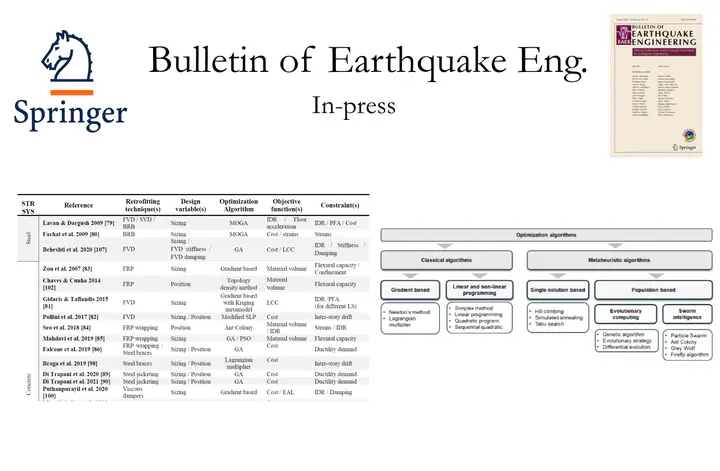Engineered Design Frameworks for Seismic Retrofitting: A State-of-the-Art Review

Abstract
The pressing need to address seismic risk reduction for built heritage, while ensuring economic and environmental sustainability, highlights the importance of formal design methodologies that achieve prescribed goals. In current practice, the design of seismic retrofitting is predominantly based on the designer’s experience and trial-and-error procedures, primarily focusing on structural performance. However, retrofit interventions have significant social, environmental, and economic impacts that must be integrated into the design process to enable informed decision-making. The absence of formalized criteria, combined with advancements in computational capabilities, has driven the development of structured frameworks to guide the design process. This paper presents a comprehensive literature review of engineered design frameworks for seismic retrofitting of existing structures. The state of the art includes Multi-Criteria Decision-Making (MCDM) frameworks, which rank multiple conflicting design options, and Optimization frameworks, which mathematically formalize the design process by adhering to prescribed constraints. Recent hybrid methodologies are also examined. The review explores these methodologies, traces their research evolution over time, outlines the advantages and limitations of each framework, and identifies gaps that future research must address.
Highlights
-
Comprehensive state-of-the-art review of engineered design frameworks for seismic retrofitting is provided
-
Applications of Multi-Criteria Decision-Making and Optimization frameworks are described in detail
-
Pro and cons of MCDM Optimization frameworks are compared across extensive literature review
-
It is highlighted the need for need for standardized methodologies to enhance sustainable design